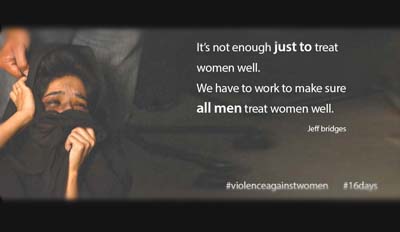Easter: Religious faith of some, spiritual thirst of others
By Alice Peter
4 April 2016
KARACHI: As the 40-days fasting spell of Lent drew to an end, Christians all around the world prepared themselves for, what is considered to be, the fulfillment of Torah and the climax of Scriptures. Followed by the cessation of Jesus Christ’s suffering on Good Friday, came the remembrance of his resurrection day. But the dawn of Easter Sunday, April 5th in Pakistan, bore witness to the recuperating followers of Jesus. Karachi’s Christian community refrained from dressing up in their Sunday best attire, even on a day that constituted as the façade of their faith.“Protect your children from agony, God” the congregation of a local church prayed, as the sunrise service began. However, what was lost in the fear of this predicament was the true spirit of their eid. Due to the recent attack on the churches in Lahore, the misery-stricken community maintained a low profile towards Easter celebrations.
With devotees refusing to comment on the joy the day brought to them, Easter Sunday remained unsuccessful in achieving the acclaim it so deserved. “Since the conflict between religions arises from the concept of Christ’s crucifixion and resurrection, I’d rather not talk about it openly,” confessed Mrs. Martha Grey as she hurried out of Central Brooks Memorial Church at the end of the service.
For Dr. Tanveer A. Tahir, Executive Director of the All-Pakistan Newspaper Society, the widespread concern for personal safety experienced by the minorities in the country is what keeps them from discussing their religious beliefs in public forums. “People need to be educated regarding Easter, not only in terms of its religious significance but also its historical congruence for people of all faiths,” he said.
The essence of a day observed as sacred by 31.5% of the world’s population, as per the statistics provided by the World Factbook, is not limited to Easter eggs and bunnies alone. Even though such symbols signify new life and fertility, in many ways they serve as distractions to the core message. When asked about the necessity of Jesus’ crucifixion on Good Friday in its historical significance, Dr. Pervaiz Sultan, Principal of St. Thomas’ Theological College in Karachi, said: “To understand Easter one must be aware of the story of Adam and Eve – a tale that lies at the heart of all monotheistic religions.”
The original sin committed in the Garden of Eden, by the first man and woman, is believed to be inherited by all of mankind. Owing to Adam’s rebellion, whose existence was deemed pure as it was a product of solely God’s command, the disconnect between God and humans became an irreversible phenomenon. One that could only be set right with the completion of the Biblical and Sharia law of retaliation: eye for an eye. As a result the sacrifice of an equally pure man, born without the physical contact between a man and a woman and free of ancestral sin, was needed to redeem humans from eternal damnation. This burden of sin was endured by none other than the revolutionary, Jesus Christ, who had to die on the cross before he could overcome death and be resurrected on the day of Easter.
So what then is the hidden meaning and relevance of the much anticipated event of the Biblical calendar for non-Christians? Moreover, does one need to accept Jesus Christ as his/her Messiah to fathom the aura of his incarnation and take inspiration from his unconditional love? The answer to that can be derived from the understanding of Easter by Islamic scholars. According to the former Minister of Religious Affairs and a well-known Pakistani broadcaster, Aamir Liaquat Hussain, a parallel can be drawn between the teachings of sacrifice and tolerance between Islam and Christianity. For him, “…both religions preach the importance of choosing the path of righteousness even if the sacrifice of life has to be made in return.” For him, people ought to put aside their personal faith once in a while and grasp the foundations of every religion. Only then can they become better human beings.
In his article Between Good Friday and Easter, Omid Safi, an Iranian-American Professor of Asian and Middle Eastern Studies writes about how the Holy Qur’an discusses the death and Resurrection of Christ.While the disagreement between Christianity and Islam stems from the concept of Easter, whereby the latter holds that the aforementioned prophecy will take place in Christ’s future Messianic return towards the end of time, the relevance of the lessons taught by the story of resurrection cannot be overlooked. In fact, in a world dominated by “…weeping and gnashing of teeth” (Luke 13:28, Holy Bible), Easter provides the oppressed with a ray of hope. A moving response by Omid Safi, to an email written to him a few days ago, read: “For me Good Friday is simply about the necessity of bearing the cross before wearing the crown, the need to endure righteous suffering before redemption.”
The suffering of Jesus can also be deconstructed within the context of the observation made in Elif Shafak’s book on Sufism, The Forty Rules of Love. The observation maintains “…when there is love, there is bound to be heartache.” In simple words, the Creator’s love for His creation exists in the embodiment of Jesus. On the other hand, the pain caused by the betrayal of His creation comes forth in the physical torment of Christ. Thus, the crux of Easter is a proof of the bittersweet reality of life – the requirement to undergo greater affliction for greater rewards.








